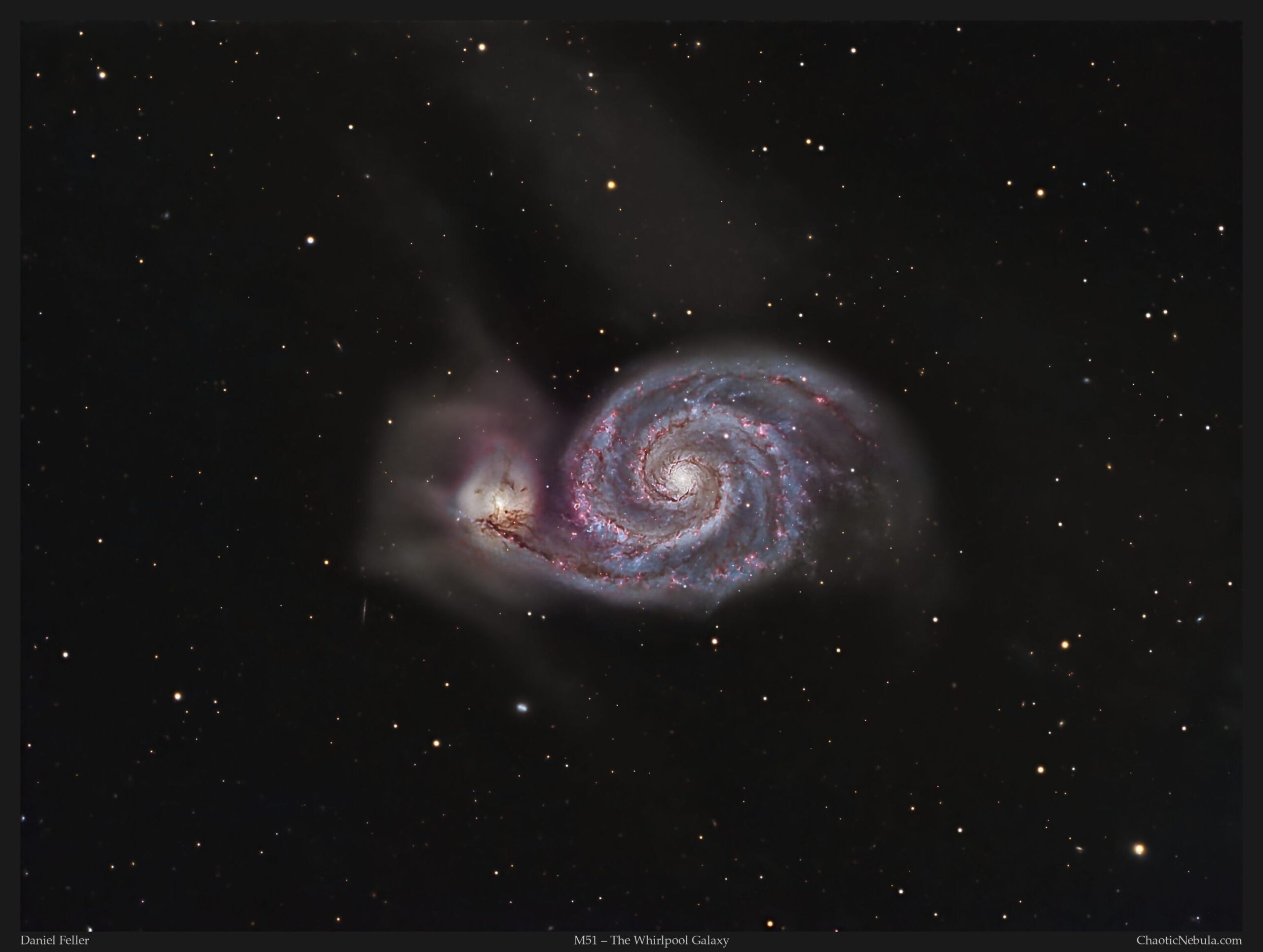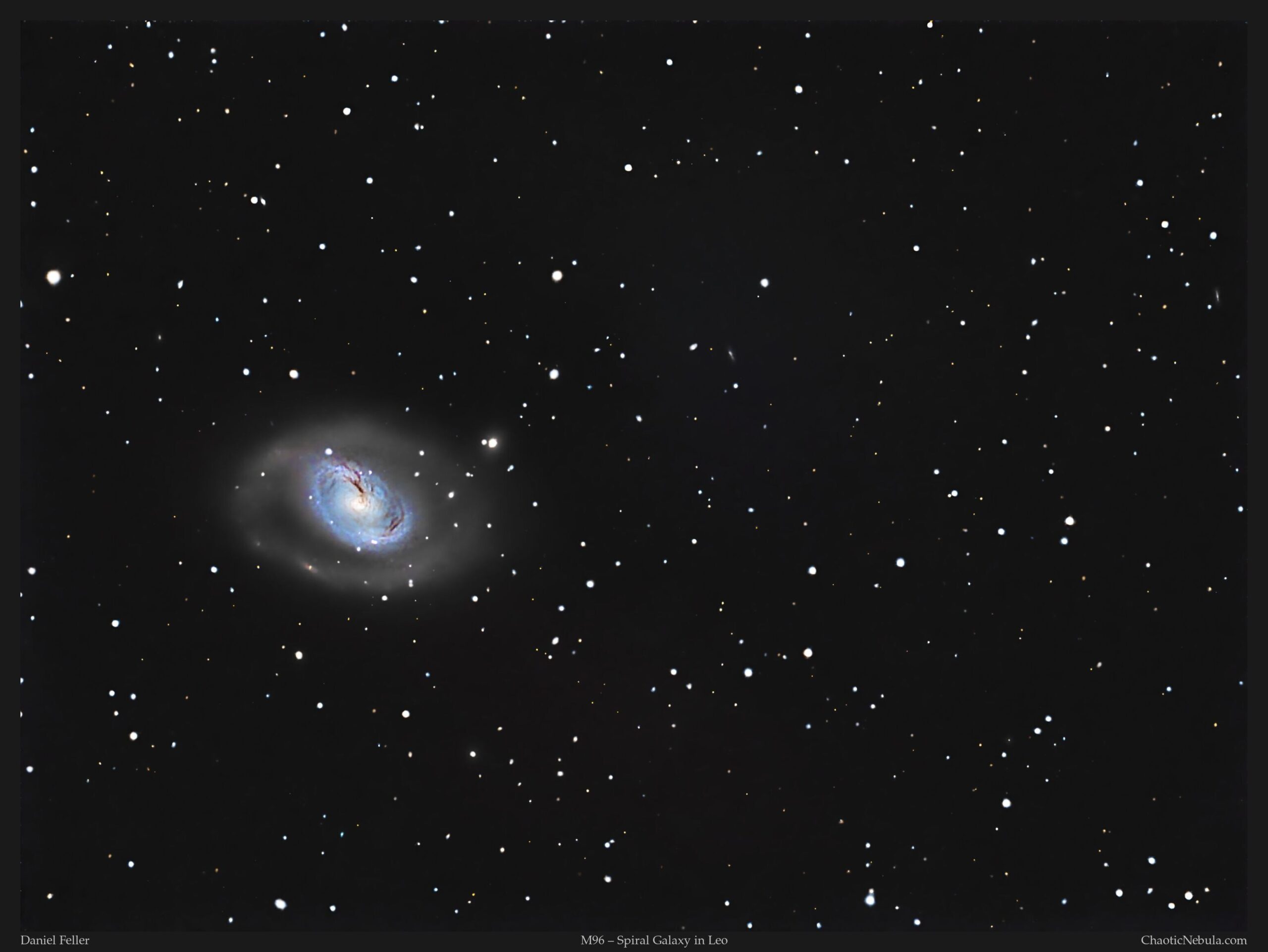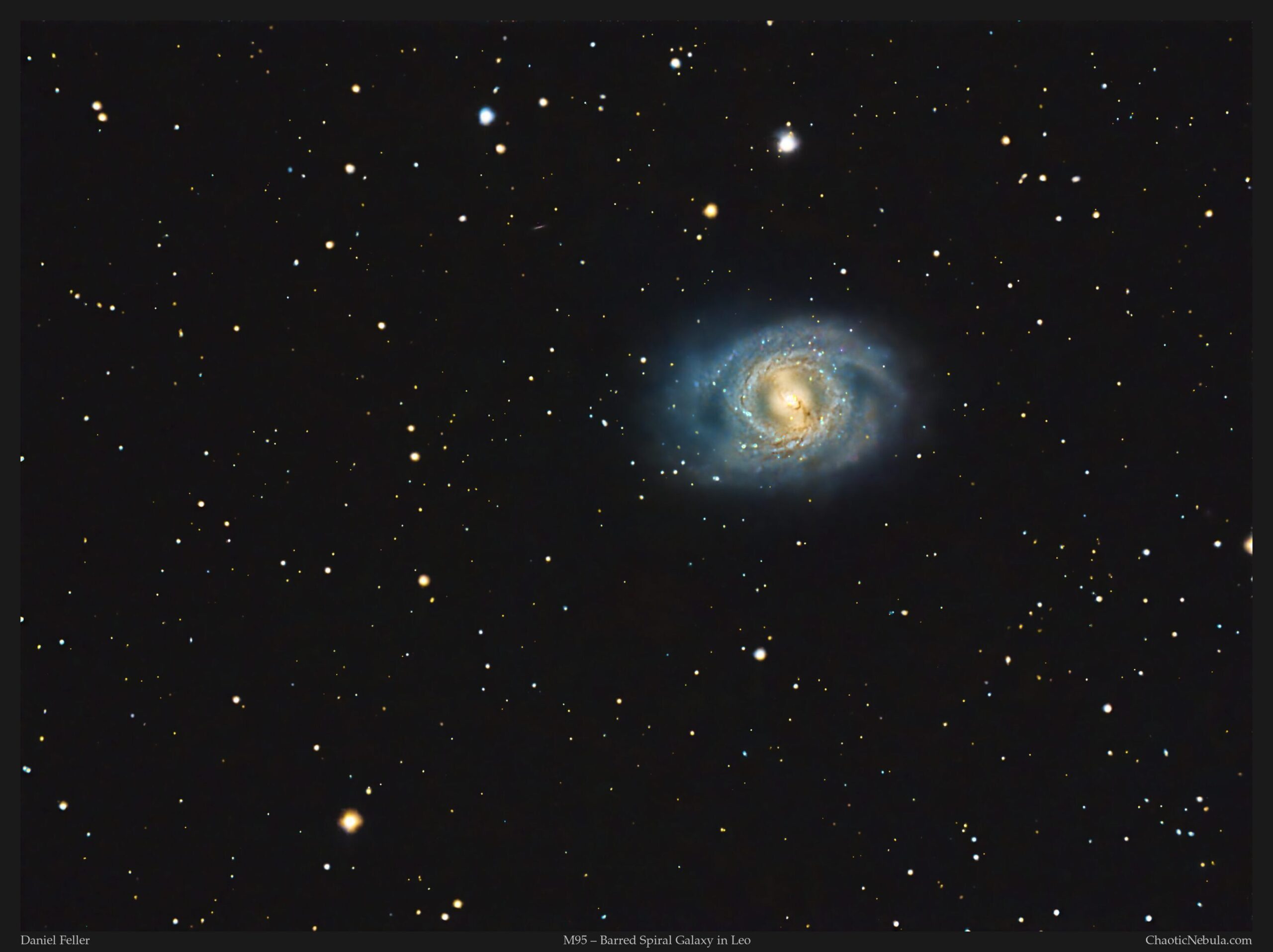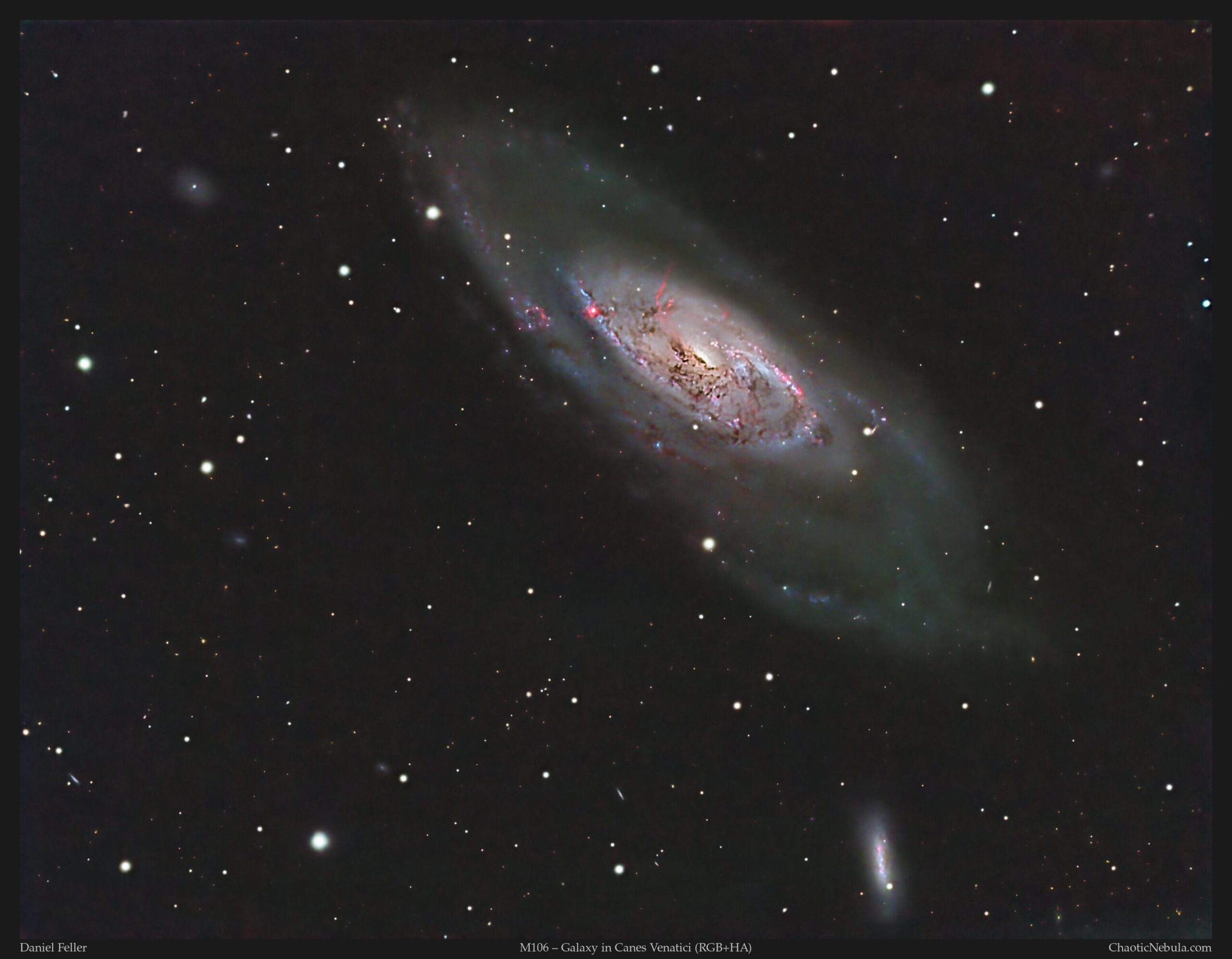Messier 51 (M51): The Whirlpool Galaxy in Canes Venatici
M51, a captivating spiral galaxy nestled approximately 23 million light-years away in the constellation Canes Venatici, stands as a marvel of celestial symmetry. Its graceful spiral arms sweep elegantly around a prominent central bulge, creating a striking visual impression.
The intricate dark dust lanes threaded through M51’s spiral arms are pivotal to the galaxy’s ongoing cycle of stellar birth. These dense clouds of dust and gas serve as the cosmic nurseries where new stars are born. Gravity compacts these materials until they ignite into brilliant, newborn stars through the process of nuclear fusion. These areas take on a reddish hue thanks to the integration of the hydrogen-alpha narrowband filter.
(more…)


